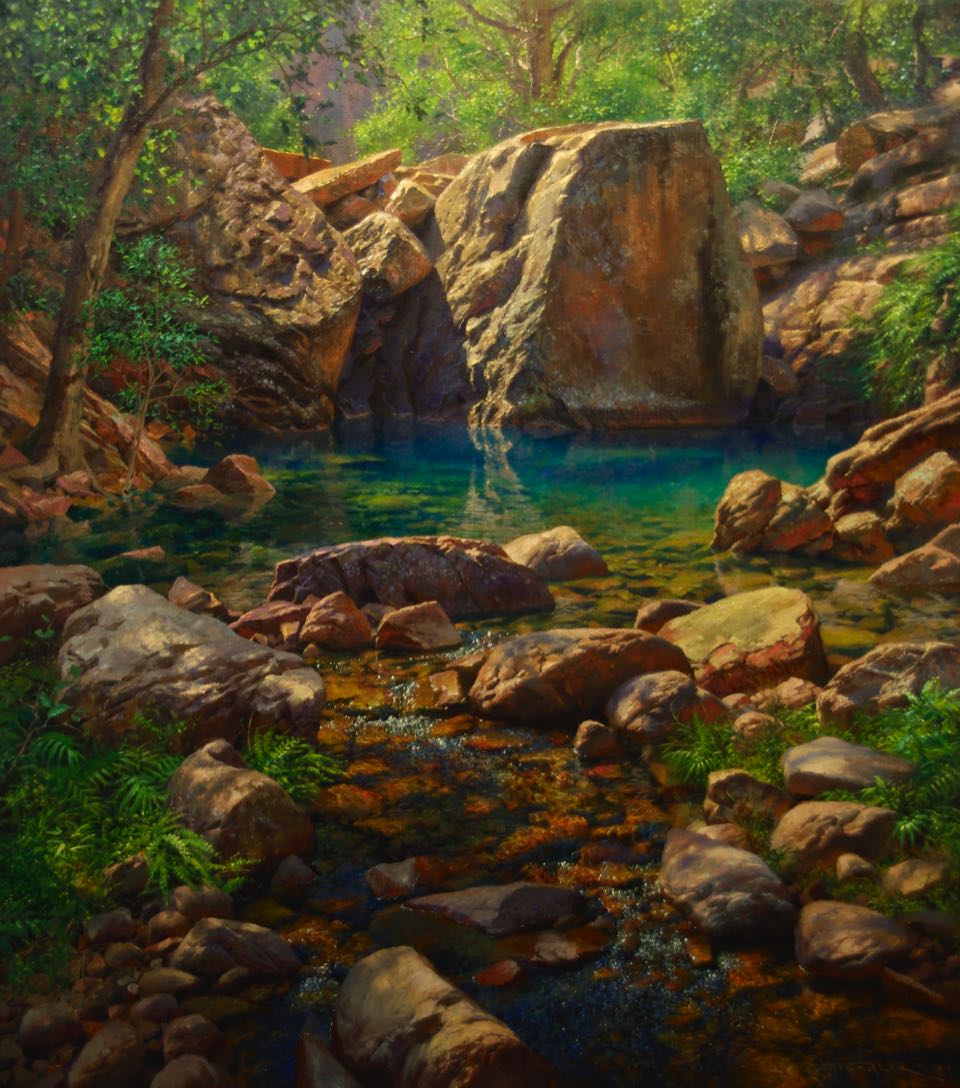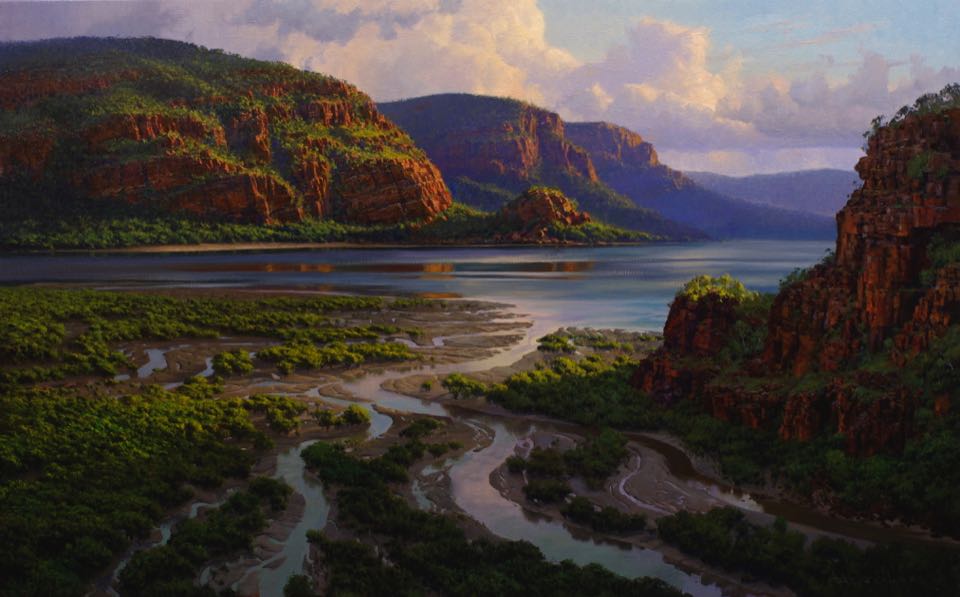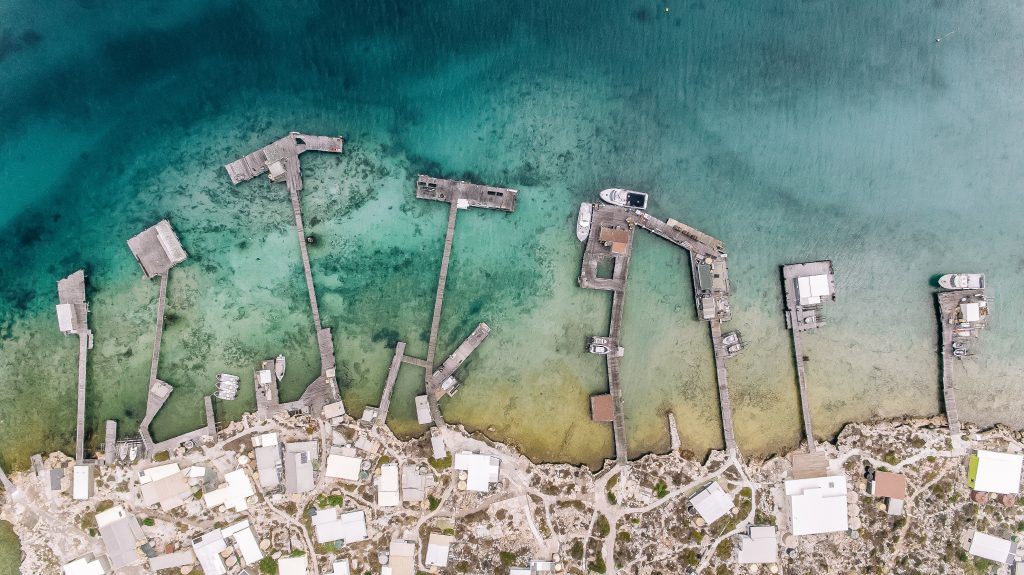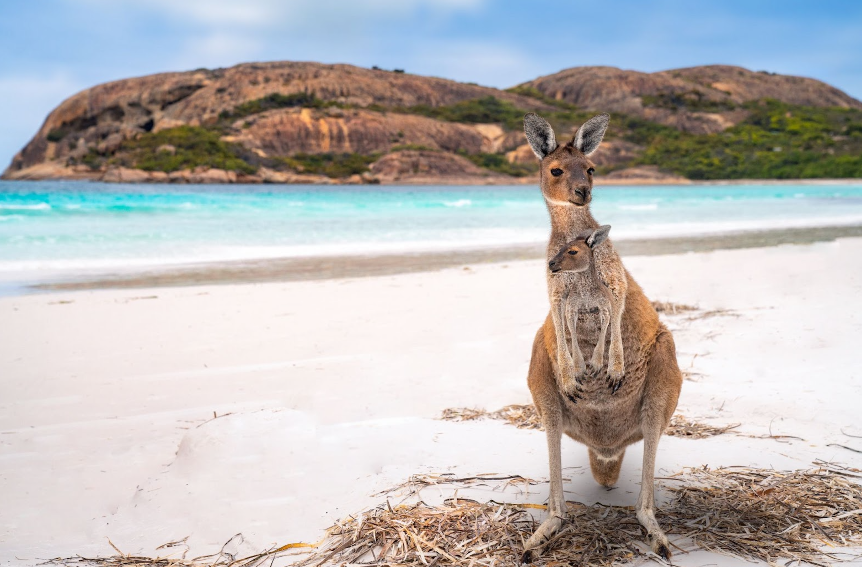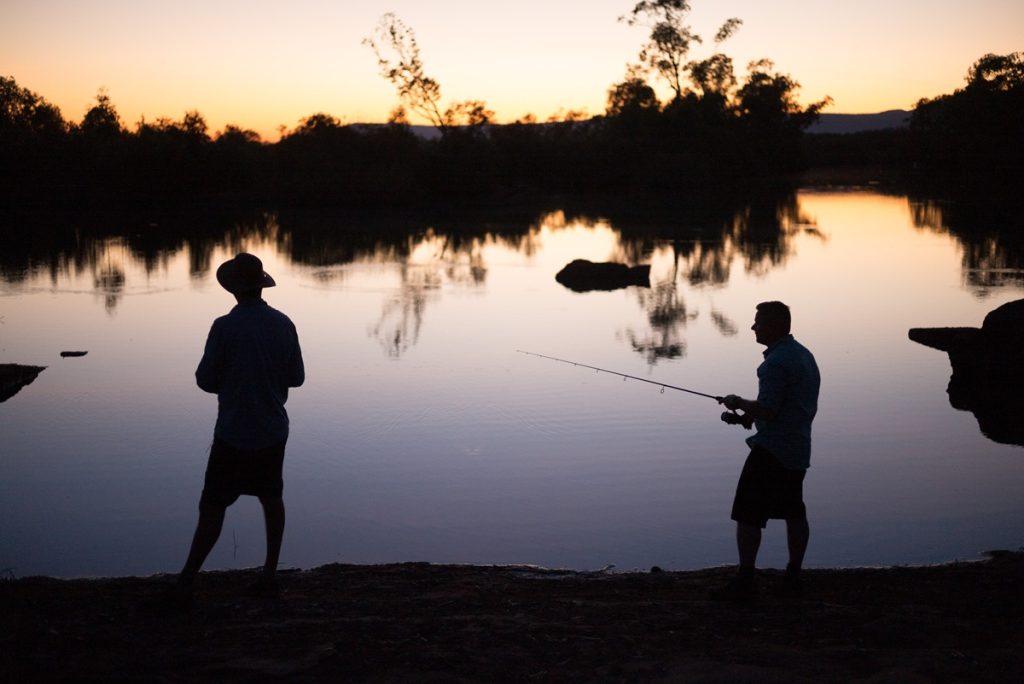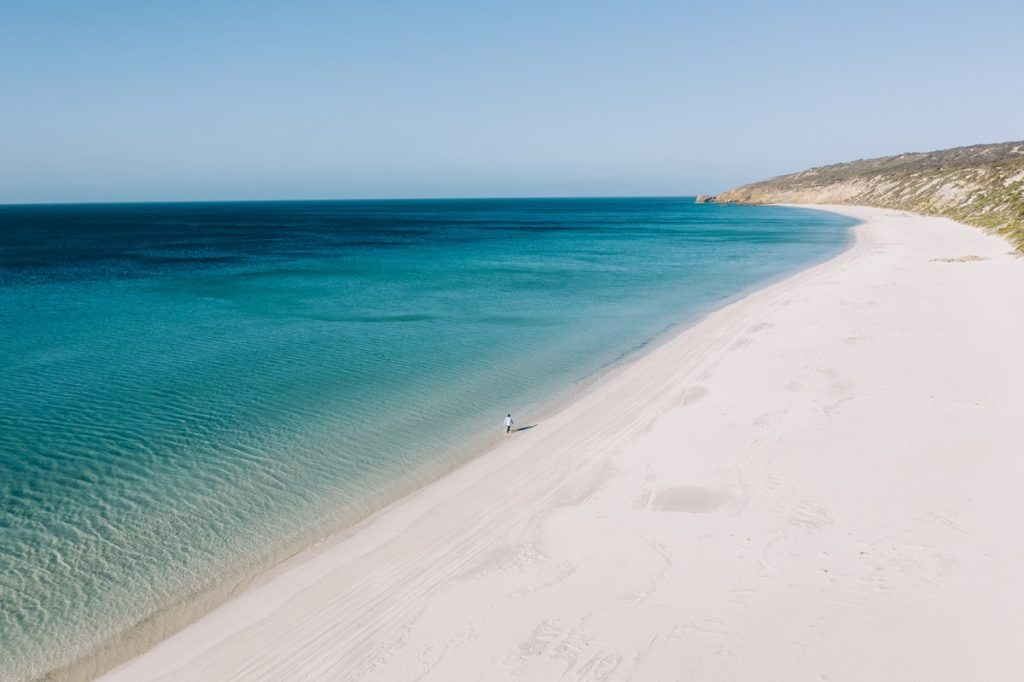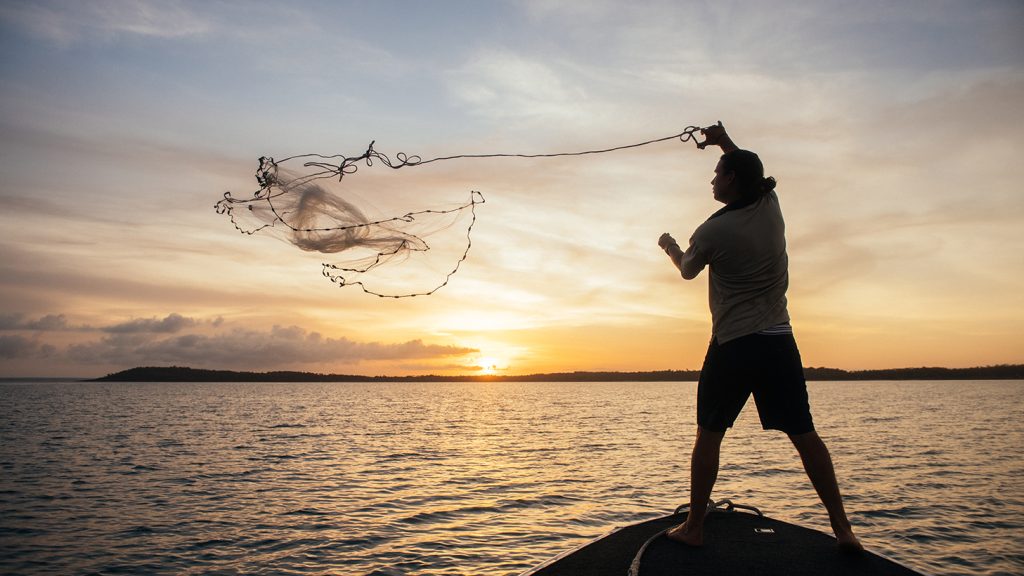Many pieces make up one painting
Andrew Tischler is a landscape artist who draws together “the elements of a place”. He wants you to feel what it’s like to be in the Kimberley and he hopes that his work will encourage others to visit this special place. Here Andrew shares some of his most inspiring Kimberley paintings.
When we remember a place we don’t think of it as a fixed thing. I don’t tend to remember the landscape in terms of photograph. I replay it like a movie in my mind. There’s movement, there’s feeling, there’s temperature, there’s all of these different aspects that are very difficult to communicate within a fixed image.
My paintings are a lot like a collage. They follow the laws of perspective and the laws of light and water dynamics. I try to focus on those pretty closely. However the image itself is not reality. If it works it draws together the elements that capture the mood and spirit of the place.
The sale river
This painting is inspired by the Sale River. I’m trying to tell the whole story of the landscape and the forces that shape it. To me you couldn’t do this with just a static image. I’d like the viewer to get some sense of the natural processes that go to carve such a dramatic landscape. You’ve got the slow consistent action of the river eroding this canyon. You’ve got the rain carving the walls and making these deep vertical gouges in the cliff-face. Then you have the individual stratification of the layers of Kimberley sandstone that show different facets and different colours of red and ochres. It’s a really striking and stunning landscape to try to capture from those geological points of view.
Different plants seem to have an affinity for different zones within the landscape. There’s only particular spots where paperbarks will grow. I found it interesting that there seemed to be this order, precision and pattern to the landscape despite the fact it may appear chaotic at first.
When it came time to reinvent this scene I was paying attention to all of those aspects: how does a fig cling to a rock face? How would it find a footing and a root hold in that cliff face? How would it catch the light; where would a paper bark set down its roots? Where does this long, grassy reed grow and how does that fit in between rocks? What possible process could there be that would justify such a beautiful smooth, sandy beach?
One of the things that Kimberley’s famous for is that enormous tide. You’ve got this constant sweeping action on that sandy beach just cleaning all the debris off it so it just remains perfect whenever it’s exposed. In addition to these geological processes, you’ve got meteorological processes which are happening. I find it so amazing that at particular times of year it can be a beautiful sunny day and then an enormous thunderstorm could just appear out of nowhere. The high humidity draws up from the ocean and then spontaneous storms emerge.
The trees came from one part of the river, the cliff-face that you see on the left-hand side came from five or six kilometres down the river. The cliff wall that’s central with a vertical gouge in it was completely ripped from another part of the Kimberley all together, but geologically the process worked so I thought it would look great in this painting.
The funny thing is that when I showed the painting of the Sale River on board and stretched it, hung it in the dining room onboard the TRUE NORTH, all of the crew that were familiar with the Kimberley looked at it and went, “That’s the Sale River.” That’s a sign that I’m on the right track. Sometimes it doesn’t work, but here it did.
I want to create a narrative that shows that there is more to this landscape than just a pretty picture. It’s about the grandeur of nature and it’s about process. I think, in the end, what inspires me is the sheer scale of it, the enormity of the task that nature had in creating such an amazing place. There’s a real responsibility on me as an artist to go beyond just a nice picture. I need to allude to all of these little individual details and elements that might give the viewer a little bit more of an idea and maybe a little bit more appreciation for the landscape.
The king’s gorge
This is the scene of King George Falls from the right-hand falls as you would be standing on top of the waterfall looking out down the canyon. In this scene I was trying to get a sense of the sheer scale of this canyon system. The height is really hard to comprehend, even from a painting like this, or from a photograph for that matter, without some sense of scale. The depth and the perspective hopefully alludes to the fact that these cliff walls close to the 100 metre mark.
It was just spooky, the scale of it. I keep trying to get my head around the process that could shape such a landscape and the forces that would be involved in carving rock like this. In order to see this spot you must take a hike up the cliff under the expert guidance of the crew. Alternatively you can take a scenic flight on the chopper.
For me one of the most important aspects of this was highlighting that texture of the Kimberley sandstone, and again alluding to the processes, geological and meteorological, that shape this landscape. One of the most significant aspects in the composition for me is the storm that’s in the background and those curtains of rain that are drawing forward. I remember sitting there on the day when I saw this for the first time and I actually watched the rain come up the canyon and then arrive at me and just feeling just completely overwhelmed. There’s a moment that I get when I’m in the landscape where I know I am presented with something I have to paint. I make a quick sketch in my sketchbook and take some notes on my colour palette I will use in my studio.
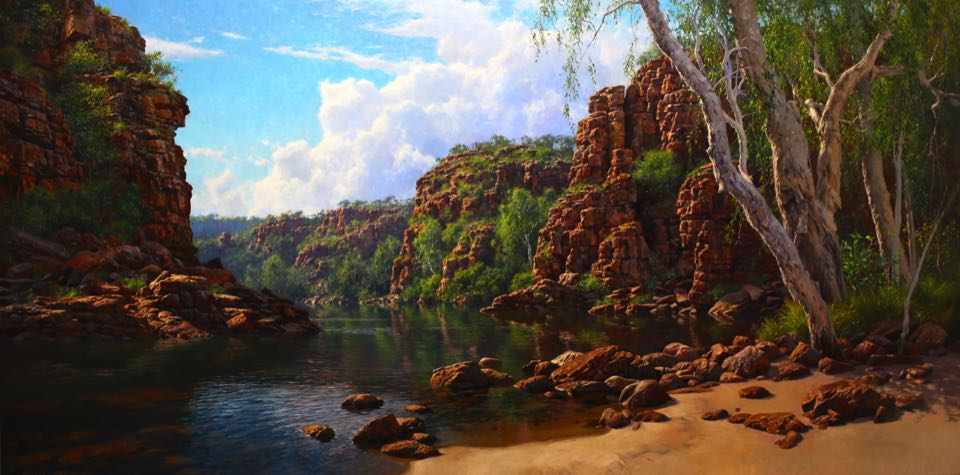
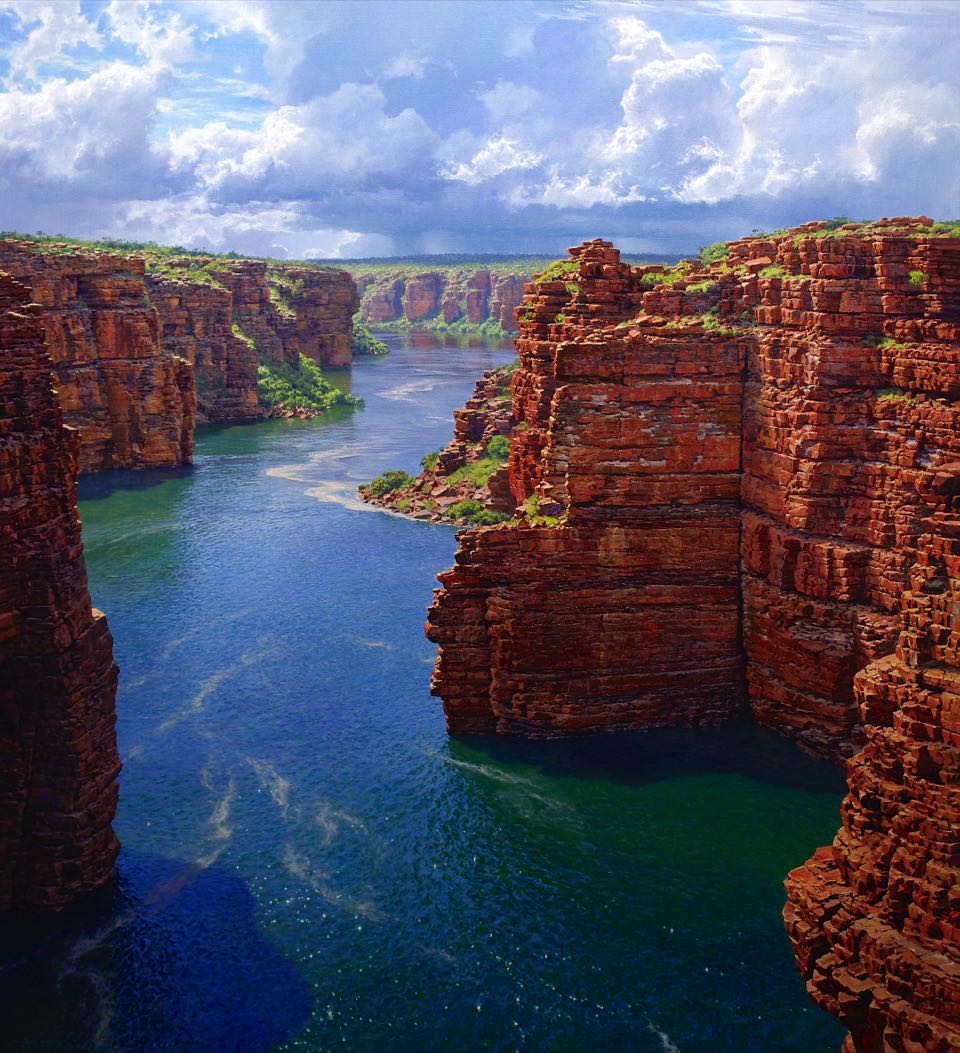
Jewel of the canyon
This is really quite a different landscape. It was really dry, incredibly hot and arid. The thing is that if you look at the unfolding of the Kimberley landscape from a bird’s eye view, you could get the impression that the dry vastness stretches on forever.
When you get down into canyons and the little river systems, you come across little gems of beautiful, pristine greenery. It’s almost a completely different climate and a different vegetation profile. This gave me an entirely different scene for an artist to paint.
Jewel of the Canyon was based on this beautiful, turquoise, crystal-clear pool in Emma Gorge, and this absolute jewel was the treat for a hot day’s hike up through the canyon. I’d love the viewer to feel like they’ve just happened upon something and that the water is so inviting they just want to dive right in.
Above receding water
This painting is the result of a helicopter flight. It takes into account all of the views that we saw throughout the flight. There were these moments where the pilot would hover over really vast mangrove flats that always seemed to be stopped abruptly by cliff-faces that had beautiful vegetation. Such striking forms. To me this is an emotional painting about what I saw on that flight. I’m searching and striving for something that is so elusive.
There are moments when the landscape and nature talks to you and as an artist you hear that voice. I think as human beings we’re tuned into that voice only at certain moments. This painting is about that conversation between the viewer and the landscape. It’s about the sheer vastness and scale and time and story and spirit of the place. I don’t have, in terms of my own culture, or my own story, a cultural tie to this particular landscape. I think all you have to be is a human being to be able to perceive how special this place is.
As soon as you have that appreciation for the landscape, it suddenly opens up appreciation for the traditional cultures that resided within this landscape for millennia. Also, I hope in some ways it inspires people to preserve and protect it.
At the end of the day what I’m trying to do is recreate an experience, capture an emotion, create a moment for the viewer to exist in. When people buy my paintings and they live with my paintings, or even just experience them for a little while, some of the more successful works have this ability to transport them. That’s always the goal. That’s always my intention with this art.
Here in Australia we tend to look at nature and landscape in terms of utility. How can we use it? I want to influence people on a emotional level. Hopefully they have a little feeling in the back of their mind that niggles at them with the message that this landscape is fine just the way it is. We don’t need to turn it into a gas hub, deep-sea port, or a nickel or uranium mine. It’s just fine doing its thing being a landscape. It will stay with you and inspire you as nature intended.
I think people are crying out for real experience and real connection away from this rat race that we find ourselves in. There’s something about the TRUE NORTH experience. It is providing people with access to one of the most pristine natural environments on the planet. What might surprise people is that it can also be one of the most profound experiences they’ll ever have as well.
Some of Andrew’s paintings can be viewed on board TRUE NORTH.
